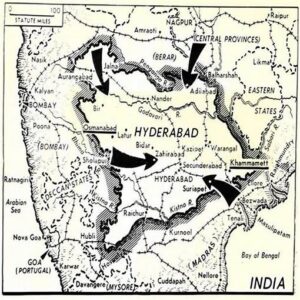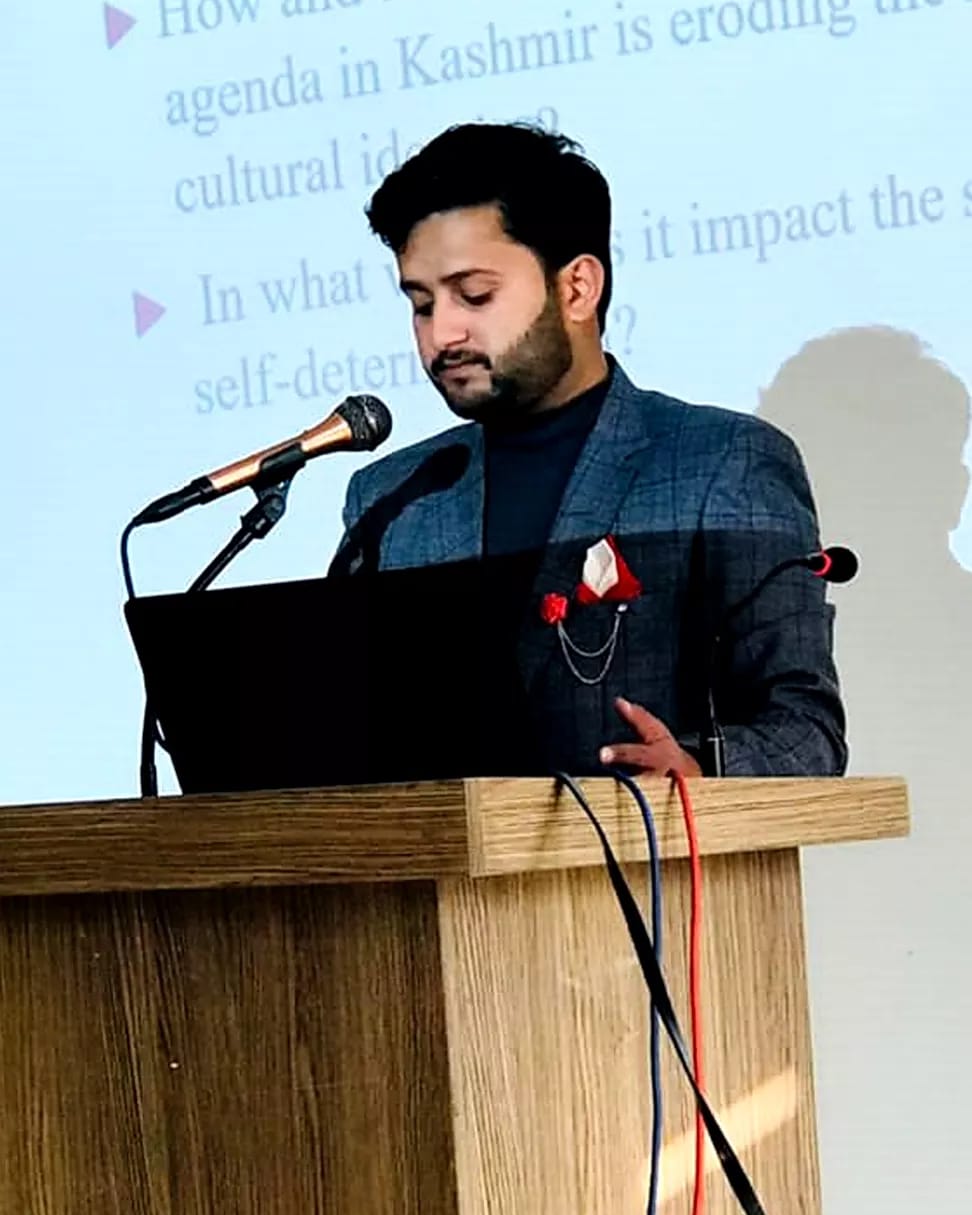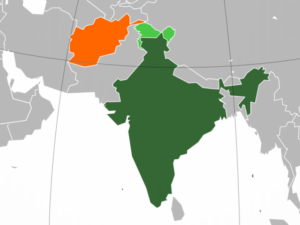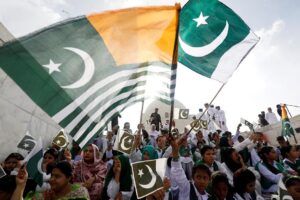By Syed Inam Ali Naqvi
The partition of the subcontinent into India and Pakistan was founded on the principle that areas with a Muslim majority would form Pakistan, while non-Muslim majority areas would constitute India. Amidst the uncertainty surrounding the fate of 560 princely states, only three states—Hyderabad, Junagadh, and Kashmir—remained unaligned with either India or Pakistan by August 15, 1947. Considering the issue of these three states, it was decided that the decision of these states would be made in accordance with the popular will. This article compares the Indian approach to these three states, emphasizing India’s insistence on the accession of Junagadh and Hyderabad to India, citing the aspirations of the people, while disregarding the people’s desires in the case of Kashmir.
Junagadh, with an 80% Hindu population but a Muslim ruler, expressed a desire to accede to Pakistan. Consequently, the Junagadh government declared its accession to Pakistan on August 15, 1947, a move that Pakistan accepted and relayed to the Indian government on September 12, 1947. In response, Indian Governor General Lord Mountbatten cautioned Quaid e Azam Muhammad Ali Jinnah, citing a violation of the agreed-upon principles of India’s partition. India contested the accession, highlighting Junagadh’s geographic proximity to India and its Hindu majority’s inclination for accession. Consequently, India proposed a joint plebiscite to resolve the matter, eventually deploying troops around Junagadh on September 17 to ensure the security and enforce law and order in the Kathiawar region. This was followed by a police action that led to the takeover of Junagadh by India. Subsequently, the Indian government conducted a plebiscite, resulting in a majority vote in favor of India.
In the case of Hyderabad, where the population was 85% Hindu and the ruler was Muslim, the Nizam expressed a desire to remain independent or accede to Pakistan. Attempts by Mountbatten to persuade him otherwise, outlining the advantages of aligning with India, were met with refusal, leading Indian leaders to adopt a hostile stance. Indian Minister for States, Sardar Patel, communicated to Mountbatten that he saw no alternative but to insist on the Nizam’s accession to the Indian dominion. Similarly, the Secretary of the Indian Ministry of the States, VP Memon, warned the Nizam that if Hyderabad remained outside the Indian Dominion, it would lead to justifiable grievances among the Hindus in the state. In the face of mounting threats from the Indian government, the Hyderabad government urgently sought the attention of the United Nations Security Council. However, before this request could be addressed by the UNSC, India initiated an attack on Hyderabad and subsequently captured it.
The state of Jammu and Kashmir, with a Muslim population of approximately 78% and a significant 93% concentration in the valley, presented a unique case. Beyond the religious dimension, various critical factors made a compelling case for its accession to Pakistan. Firstly, all railway and road links to the outside world were connected through Pakistan. Additionally, the postal and telegraphic services were routed through Pakistan. Of utmost significance was the influx of vital commodities like petroleum and sugar, which arrived from Pakistan via the Jehlum Valley route. Moreover, the flourishing tourism industry in Kashmir relied heavily on routes stemming from Pakistan. In a significant demonstration of the people’s aspirations, the working committee of the ruling party in Jammu and Kashmir, the Muslim Conference, passed a resolution in favor of Pakistan on July 19, 1947.
However, despite these critical considerations, India compelled the Maharaja of Kashmir to accede to India, even though he initially desired independence. In May 1947, the President of the Indian National Congress, Acharya Kirpalani, visited Kashmir in an attempt to persuade the Maharaja to accede to India. The rulers of Faridkot, Kapurthala, and Patiala also visited to advocate for accession to India. Furthermore, Indian leadership, including Governor General Lord Mountbatten and Gandhi, made concerted efforts to sway the Maharaja towards aligning with the Indian Dominion. Gradually, the Maharaja’s inclinations shifted, and he leaned toward pro-Indian sentiments.
Consequently, in July, the Maharaja ordered his Muslim subjects to surrender their arms and disarmed Muslim personnel in the army. Simultaneously, there were instances of aggression and injustice by RSS goons, Sikhs, and Patiala forces against the Muslims, leading to a rise in tensions. These mounting atrocities and the deployment of RSS and Sikhs culminated in the Poonch rebellion, where 70,000 ex-military men from Poonch rose up against injustice, liberating their areas. This was followed by the tribal invasion on October 21, wherein forces arrived to assist their Muslim brethren, subsequently liberating Muzaffarabad and adjoining regions.
When the tribal forces reached Srinagar, the Maharaja fled to Jammu and signed the Instrument of Accession on October 25, requesting military assistance from India. Consequently, the Indian military arrived in Kashmir on October 27. In response to the Maharaja’s Instrument of Accession, Mountbatten dispatched a letter emphasizing that the final decision regarding Jammu and Kashmir must be determined by the people of Jammu and Kashmir.
Despite promises of a plebiscite by both Indian Prime Minister Nehru and the United Nations, India’s superior military and political power allowed it to deny the Kashmiri people the right to choose their own fate. This pattern reveals how India prioritized acquiring land and resources over respecting the wishes of the local population. While India justified its annexation of Junagadh and Hyderabad by highlighting their Hindu majorities, it used force in Kashmir despite its cultural ties to Pakistan and Muslim-majority population. India’s refusal to hold a plebiscite, which would have likely resulted in Kashmir joining Pakistan, exposes its disregard for democratic principles when they conflicted with its expansionist goals. In the tumultuous aftermath of partition, India’s actions prove that power often triumphed over principle, leaving a lasting impact on the region.
The views expressed in this article are solely those of the author and do not necessarily reflect the views of The Global Politico.








